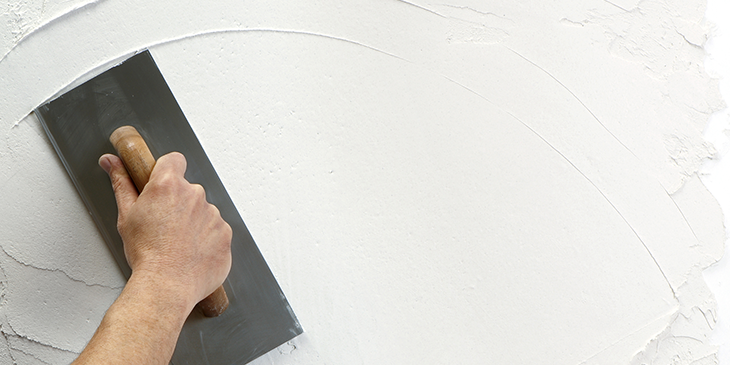Plastering Guidance from Professionals: Ideal Practices for Success
Plastering Guidance from Professionals: Ideal Practices for Success
Blog Article
A Comprehensive Overview to Mastering Plastering Abilities for Your Renovation Requirements

Necessary Devices and Materials
Numerous important devices serve distinctive functions, ensuring efficiency and accuracy throughout the smudging procedure. A high-quality trowel, for instance, is crucial for using and smoothing plaster, while a hawk supplies a steady system for holding the product.
In enhancement to tools, choosing the ideal plastering products is crucial. Gypsum-based plasters are commonly chosen for their flexibility and simplicity of usage, while cement-based choices are excellent for exterior applications as a result of their resilience. Water and bonding agents play significant duties in accomplishing proper uniformity and adhesion, making sure that the plaster adheres properly to the surface area.
Moreover, safety equipment such as safety glasses, handwear covers, and masks is necessary to protect versus dirt and irritation during the application process. By setting up the appropriate combination of products and devices, plasterers can boost their capability and produce high-grade surfaces, inevitably raising the general workmanship of their job.
Preparing Surface Areas for Gluing
Achieving a smooth and long lasting plaster coating begins with careful preparation of the surface areas to be glued. This fundamental action is crucial to guaranteeing adhesion and the long life of the plaster. Start by assessing the problem of the substratum-- whether it is masonry, concrete, or drywall-- getting rid of any kind of loosened paint, dirt, or particles that may disrupt bonding.
Following, fix any imperfections such as fractures or openings. Utilize an appropriate filler to attain a degree surface area; this can be important for avoiding future problems. When fixed, ensure the surface area is tidy and completely dry, as wetness can compromise plaster adherence.
For permeable surface areas, it is advisable to apply a bonding representative. This product enhances adhesion and creates a reputable user interface between the plaster and substrate. If collaborating with formerly plastered surface areas, it might be essential to mess up or sand the area gently to give a trick for the brand-new plaster layer.
Smudging Strategies and Tips
Grasping plastering methods requires both skill and practice to attain a perfect coating. One essential strategy is the application of the plaster in several thin layers, as opposed to a single thick coat. This approach permits far better attachment and lowers the risk of fracturing. Beginning with a base layer, guaranteeing it is evenly spread and leveled with a hawk and trowel. Utilize a straightedge to inspect for any kind of flaws prior to proceeding to subsequent layers.
When applying the finish layer, employ a troweling strategy that includes holding the trowel at a slight angle and operating in a round activity. This helps to develop a smooth surface area and minimizes the look of trowel marks. Furthermore, keep a spray container of water useful to haze the surface lightly; this keeps the plaster convenient and permits smoother ending up.
Timing is important; you could try this out job effectively, as the plaster begins to establish. When the plaster has tightened but is still damp, use a moist sponge to delicately smooth the surface area additionally. Last but not least, permit appropriate drying time prior to sanding or paint, guaranteeing your difficult work results in a specialist, top quality coating.
Typical Errors to Avoid

An additional common error is using plaster as well heavily. Overzealous applications can lead to breaking and prolonged drying out times. It's crucial to use plaster in thin, also layers, enabling each layer to dry sufficiently prior to adding a lot more.
In addition, not using the right tools can prevent the top quality of the finish. Making use of unsuitable trowels or mixers can produce incongruities in the smudging process. Always choose high-quality devices created for plastering jobs.
Finally, numerous individuals take too lightly the relevance of timing. Working in improper temperature try this site levels or humidity degrees can negatively impact plaster drying out and healing. It is recommended to examine weather conditions and adjust your timetable as necessary.
Ending Up Touches for a Specialist Appearance
The last phases of a smudging task are essential for achieving a polished, specialist appearance. When the plaster has dried adequately, the following step is to evaluate the surface area for flaws.
After fining sand, it's suggested to clean the surface to eliminate any dirt and particles. A moist towel works for this purpose, complied with by a comprehensive drying out duration. If necessary, applying a thin layer of completing plaster helpful site can boost the surface even more, supplying a smooth finish.
When the completing plaster is completely dry, another round of fining sand may be needed to achieve the desired level of smoothness. Finally, think about using a primer before painting or wallpapering, which will certainly boost adhesion and durability.
Verdict
Grasping smudging abilities dramatically boosts the quality of restoration projects. A thorough understanding of necessary tools, surface area prep work, and efficient techniques is crucial for attaining expert results.
Water and bonding representatives play significant roles in attaining correct uniformity and adhesion, guaranteeing that the plaster adheres properly to the surface. Plastering.


Furthermore, keep a spray bottle of water handy to haze the surface area gently; this maintains the plaster workable and enables for smoother completing. (Plastering)
If essential, using a thin layer of ending up plaster can boost the surface area additionally, offering a smooth coating.
Report this page